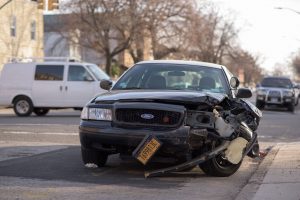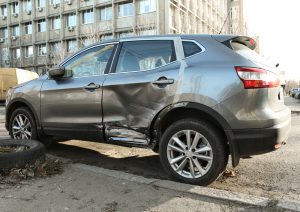When it comes to automobile insurance, it’s important to understand your policies. You want to have enough coverage should something happen, but at the same time you don’t want to pay for coverage you don’t need. There are different options available to you and it’s important that you understand them.

Collision insurance coverage is something you need to consider as part of your policy. It has many benefits, but it needs to be under the right circumstances. There are certain things you need to understand about collision coverage and things you need to evaluate about your own vehicle before you decide about moving forward. Take a look at the information below to see what you need to do.
What you need to know about collision insurance coverage
– It’s optional.
The first thing is that you need to understand this type of coverage. Collision insurance coverage is not required by state law like other types of insurance. For this type of coverage, you can decide for yourself if it’s something you want. If you still have a loan though, your lender will probably insist that you maintain collision coverage and may add it to your loan if you don’t purchase it.
– What it covers.
Collision insurance can help you in certain accidents. If you have a collision with either another vehicle or hit a stationary object, your vehicle could have a lot of damage. Collision insurance helps to repair or replace your vehicle in these cases.
This type of insurance is also very helpful in case the other person caused the collision and is uninsured. You may have issues getting the funds from someone who isn’t insured, so collision insurance will be able to help you in this case.
– There is a deductible.
Usually you would be able to choose the amount of your deductible when you buy coverage. Your deductible should be an amount that you can easily pay in the event of an accident. The lower your deductible, the higher your premium will be, so keep that in mind.
– There is a limit.
Keep in mind that there is a limit to the amount that your collision insurance will pay. It will only pay up to the value of your vehicle. It is possible that your vehicle could cost more to fix than it is valued.
Do I need it?
– Consider your specific vehicle.
The decision to drop collision coverage is not one to take lightly. It is also one that is different for everyone and depends on your individual circumstances.
When deciding whether or not to have or drop collision insurance, you need to know the actual value of your vehicle. This is a great place to start. Most people are likely to drop this coverage once their car is at least eight years old, according to analysis from Insurance.com. If you decide to drop your coverage, it should mean that you’re able to function without the car or you can replace it on your own.
Personal finance writer Kathy Kristof suggests to weigh the coverage cost against the replacement cost. If you pay 10 percent or more of the replacement cost of your vehicle for collision coverage, you might want to consider dropping it. In order to determine this, you need to know the worth of your vehicle.
– How to figure out the value of your vehicle.
Kelley Blue Book is an authority on vehicle value. You will need to do is enter in your vehicle’s year, make, model, mileage and zip code. Then answer some questions about your specific car and you will be able to determine your car’s trade-in value.
– Consider your savings and budget.
When you make any sort of purchase, consider how the cost will affect your budget. You should also take into account how much you have in your savings. Could you replace your car if you had to on your own?
Collision insurance can be a valuable asset in times of need. Make sure you understand your policy and if your vehicle should be covered under this protection. Work closely with your insurance company to fully understand what you need. Contact our Team for more information.


